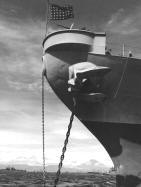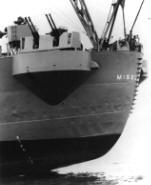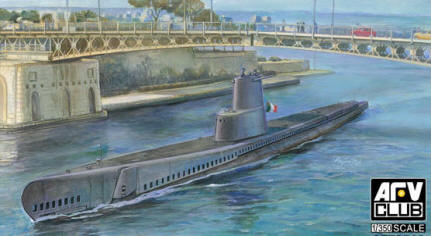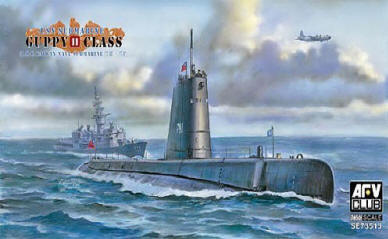
Photo-Etched Parts:
For more info on Model Click link Below;
http://www.shipmodels.info/mws_forum/viewtopic.php?f=53&t=106174
GUPPY Program
The Greater Underwater Propulsion Power Program (GUPPP) was initiated by the United States Navy after World War II. Like all programs in the military, some sort of "name" needed to be applied that would attract and hold attention. Since GUPPP didn't sound quite right, the third P was dropped and a Y added. Thus the word GUPPY, which had a far better ring to it since it did in fact sound more like a fish. At this time all submarines were named after undersea life.
The GUPPY was an extensive conversion that gave fleet boats a snorkel, a more streamlined hull, much greater battery capacity, and a BQR 2. There were a total of 50 GUPPY conversions made between 1946 and 1960. The GUPPYs were the best that the submarine force could do and still maintain a reasonable force structure. They had improved ASW capabilities and were far more survivable than standard World War II fleet boats, but reflected the limits of both money and technology, particularly before Korea and the two nuclear revolutions.
The WWII "fleet boat" submarines were basically surface ships that could submerge, but had very high drag when submerged. The fairing of hull and appendages led to the Guppy Class. This series forced designers to determine ways of minimizing drag while still achieving effective high speeds. Deck guns were removed, the outer hull was streamlined, the conning tower replaced by a sail, replaced the propellers, installed more air conditioning, and the battery capacity doubled. The program was successful, the converted submarines were capable of 18.2 kts submerged, exceeding their surfaced speed by 0.4 kts.
The Navy quickly combined German innovation with American engineering and design in boats with greater underwater propulsive power (for example the GUPPY 1 conversions) and the new Tang (SS-563) class. These boats demonstrated the possibilities and challenges of much greater submerged speed and prolonged submergence. Greater depth, speed, and personnel endurance became absolutely critical to the future.
The Navy began the program by reverse-engineering two captured Type XXI U-boats: U-2513 and U-3008. That analysis led to four goals: increase the submarines' battery capacities, streamline the boats' structures, add snorkels, and improve the fire control systems. The Tang class of submarines was a product of the Greater Underwater Propulsion Power Program (GUPPY), which incorporated German U-boat technology into the United States Navy's submarine design. They comprised the state of the art in post-World War II conventionally-powered submarine design; a design that was incorporated into and replaced by the nuclear-powered submarines of the 1950s and beyond.




